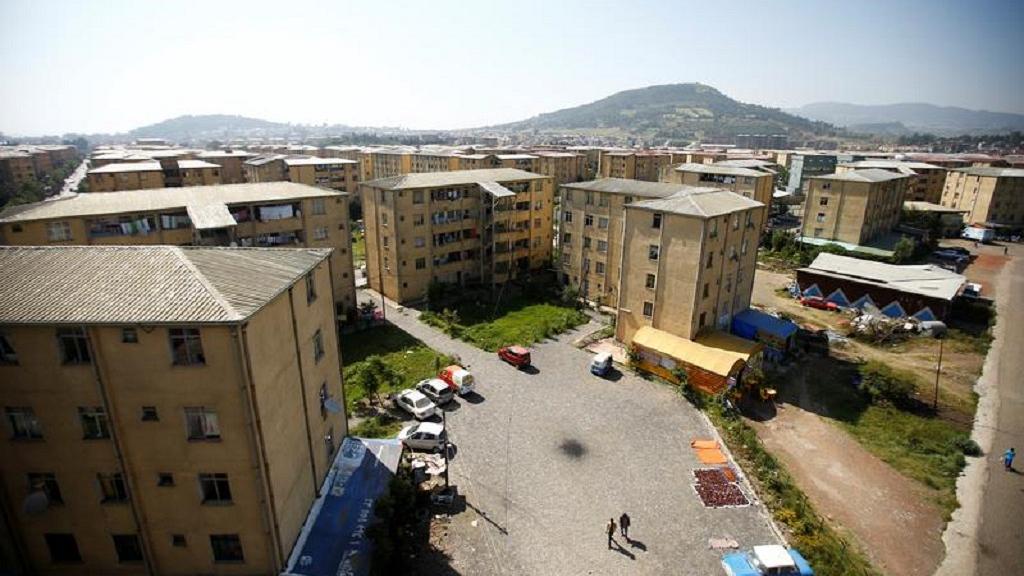

The Oromia regional government in Ethiopia has slammed the Addis Ababa city administration over its handling of allocation of condominium houses.
The government issued a statement on Thursday shortly after multiple protests were held across the region after low-cost buildings were distributed by the deputy mayor of the city, Takele Uma Banti.
Oromia rejected as unnecessary what it said was the handing over of condominium units found within a special zone of the region whiles disputes still remain over the exact boundaries of Addis Ababa.
The city administration earlier this week allocated about twelve thousand of the estimated 51,000 flats built by government. The move was mainly to solve acute shortage of housing.
The deputy mayor was voted into office in July 2018 to serve s 31st holder of the post. He had previously worked with the Oromia Transport Bureau.
Addis Ababa which serves as the national capital is located in the Oromia region but is one of two chartered cities in the country. The other one is Dire Dawa.
Oromos have long claimed the capital which is referred to in local parlance as Finfeenne. Oromia – the country’s largest and most populated region – completely surrounds the capital Addis Ababa.
The region was at the heart of protests that kicked against a plan to expand the boundaries of the capital in 2015. The protests morphed into anti-government rallies that led to political change.
The expansion plan was dropped in 2015 but the protests forced then Prime Minister Hailemariam Desalegn to resign in early 2018 ushering in the era of PM Abiy Ahmed.
Abiy, the first Oromo in recent years to become Prime Minister is also head of the party that currently governs the region, Oromo Democratic Party, ODP. The regional president is, however, the ODP vice-president, Lemma Megerssa.
Oromo Protests
Hundreds in some cases thousands of people in Ethiopia’s Oromia region took to the streets yesterday (March 7) in major towns to protest the manner in which the Addis Ababa city administration
Reports indicate that over a dozen locations across Oromia – the largest and most populous region – were hit by the protests. Among other places Jimma, Ambo, Awaday, Bale and Adama were all affected by the action.
The city administration led by the deputy city mayor, Takele Uma Banti, on Wednesday (March 6), made allocations of residential space built in an area called Koye Feche located in the Oromia Regional State’s special zone.
Addis Ababa which serves as the national capital is located in the Oromia region but is one of two chartered cities in the country. The other one is Dire Dawa. Oromos have long claimed the capital which is referred to in local parlance as Finfeene.
The city administration gave over 5,100 people 3 bedroom apartments on condominium sites mostly in the capital. While 7,100 people got a studio or one and two bedroom apartments in Koye Feche 1 & 2 sites.
The deputy mayor said farmers who were displaced from the sites were included in the transfer without lottery. The issue of uprooting local farmers to make way for the housing project has long been a divisive issue.
The project which dates back to 2016 forms part of plans to deal with rapid population growth and an acute shortage of affordable housing.
Authorities in Addis Ababa and in smaller cities across the country have been building condominium units targeting low and middle-income groups, financed entirely with public money.
Although Ethiopia is one of the least urbanized countries in the world, Addis Ababa’s population ast at 2016 was thought to be close to four million, and growing at a rate of nearly four percent per year.
HOUSING LOTTERY FOR POOR
The housing complexes are typically four storeys high, with the aim of promoting densification and containing the city’s urban sprawl.
Poor residents who do not own property and are instead reliant on insecure tenancies, were encouraged to register for a lottery system which allocates the units as they become available.
Those who can afford the deposit and the scheme’s generous mortgage repayment terms are then granted ownership of their units, although all land in Ethiopia is still formally owned by the government.
The aim is to transform a housing sector historically characterized by rental occupation into one based on private home ownership.
Under the previous communist regime, known as the Derg, approximately 60 percent of housing in Addis Ababa was rental accommodation and government-owned housing in the Kebele municipal divisions accounted for 93 percent of the sector.
Kebele housing today is of typically poor quality, with homes made of wood and mud and without proper sanitation and infrastructure.
According to a report produced for the World Bank in 2016, the Integrated Housing Development Programme, IHDP, marks a “radical departure” from previous approaches to housing in Ethiopia.
The government aims to regenerate the inner city by replacing Kebele slums with condominiums.
more recommended stories
 Ethiopian Diplomat Assassinated in Lasanod: Terror Shadows Eastern Sool
Ethiopian Diplomat Assassinated in Lasanod: Terror Shadows Eastern SoolLasanod, Somaliland – April 20, 2025.
 Somalia’s Desperation, Somaliland’s Determination: A Tale of Two Realities
Somalia’s Desperation, Somaliland’s Determination: A Tale of Two RealitiesA recently leaked letter from Somali.
 Somaliland’s Statehood: Rooted in History, Built on Stability – Presidential Spokesperson
Somaliland’s Statehood: Rooted in History, Built on Stability – Presidential SpokespersonHargeisa (Somaliland.com):- The Spokesperson of the.
 Somaliland’s Berbera Industrial Park: A New Era of Investment and Job Creation
Somaliland’s Berbera Industrial Park: A New Era of Investment and Job CreationThe Government of Somaliland, under the.


Leave a Comment